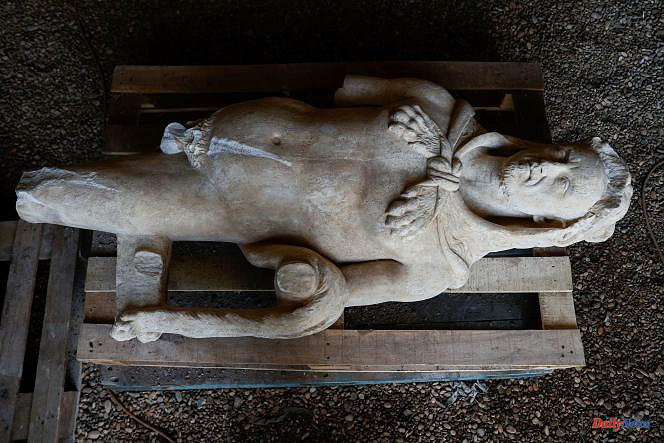As often in Rome, banality has met the eternal. On January 25, simple repair work undertaken to restore a drainage pipe led to the discovery of an archaeological treasure in the basement of Parco Scott, in the south of the Italian capital and near the ancient via Appia. The earth stirred up by the workers made it possible to unearth an ancient marble statue of a Heracles after the blade of a digger stumbled on a mass of stone, alerting the archaeologist Federica Acierno, in charge of the preventive excavations on the site.
The Greek hero was recognized by his attributes: the lion's skin worn as a headdress with the paws of the feline tied on the chest, and the club. The object of the discovery, found about twenty meters deep in the bowels of the Eternal City, dates from the Imperial period (27 BC-476 AD). Its exact date has not yet been determined. The archaeologists of the Appia Antica Regional Park have indicated that it was not found in its original context but in an embankment made in the 20th century for the laying of an evacuation pipe.
Human-sized, the statue – whose features evoke a middle-aged man – pays homage to a wealthy Roman who had himself represented in the guise of Heracles to underline his rank. According to archaeologist Francesca Romana Paolillo of the Appia Antica Regional Park, quoted by Reuters, the character bears a certain resemblance to the known representations of Decius, in power in Rome between 249 and 251. After having suffered accidental damage at the time of discovery, the shattered pieces of the statue are now restored and taken out of their gangue to later be shown to the public. Work in progress should facilitate a more precise identification of the mighty Roman covered for this statuary portrait of the attributes of the demigod.
The via Appia connects Rome to the port of Brindisi, a port located in the current region of Puglia, over nearly 550 kilometers. Since January 11, the Italian Ministry of Culture has supported the inclusion of this route as a UNESCO World Heritage Site. It owes its name to Appio Claudio Cieco, a statesman and Roman scholar who wanted to facilitate, thanks to its layout, the movement of troops towards the south of the Peninsula, first towards Capua, then towards Brindisi, the gateway to Greece. and the East.












